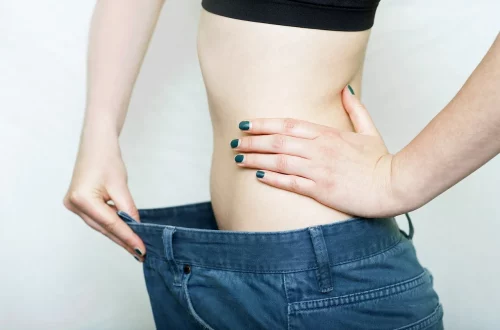
Top 5 Best Deadlift Shoes for Maximum Performance and Comfort
The deadlift is one of the most fundamental and effective exercises for building strength and power. It engages multiple muscle groups, including the legs, back, and core, making it a staple in strength training programs. However, to maximize performance and prevent injuries while performing this lift, the right footwear is essential. Deadlift shoes are specifically designed to provide the stability, traction, and support needed for optimal lifting. Unlike regular athletic shoes, which may have cushioning that can hinder performance, deadlift shoes typically feature a flat sole, ensuring a stable base and a direct connection to the ground.
Choosing the right deadlift shoes can significantly impact your lifting technique and overall comfort during workouts. The right shoes help maintain proper posture, reduce the risk of injury, and allow for efficient force transfer from the ground through your body. As the popularity of strength training continues to rise, more options for specialized footwear have become available, catering to various preferences and needs. This article delves into the key features to consider when selecting deadlift shoes, ensuring you can make an informed choice for your lifting journey.
Key Features to Look for in Deadlift Shoes
When selecting deadlift shoes, there are several crucial features to consider that can enhance performance and comfort during your lifts. One of the most significant factors is the shoe’s sole. A flat, rigid sole is essential for providing stability and support. Unlike running or cross-training shoes, which often have cushioned soles that can absorb energy, deadlift shoes are designed to keep your foot firmly planted on the ground. This firmness allows for better energy transfer, resulting in a more powerful lift.
Another important aspect is the heel height. Many lifters prefer shoes with a slight heel elevation, as this can help improve the angle of the ankle, allowing for better positioning of the hips and back. However, the ideal heel height can vary depending on individual biomechanics and preferences. It’s essential to try on various options to determine what feels most comfortable for you.
The upper material of the shoe is also worth noting. A durable and breathable material can enhance comfort and longevity. Many deadlift shoes feature a combination of leather and synthetic materials, providing both support and flexibility. Additionally, a secure fit is crucial. Look for shoes that offer adjustable laces or straps, allowing for a customized fit that keeps your foot stable during lifts.
Lastly, consider the overall weight of the shoe. Lightweight options can help reduce fatigue during extended workout sessions, while heavier shoes may provide a sense of stability for some lifters. Ultimately, the best deadlift shoe will depend on individual preferences, lifting style, and foot anatomy, making it essential to explore various options to find your perfect match.
Top Brands for Deadlift Shoes
Numerous brands specialize in producing high-quality deadlift shoes, each offering unique features and designs. Some of the most reputable brands include Adidas, Nike, and Inov-8.
Adidas is known for its innovative designs and technology. The Adidas Powerlift series is particularly popular among powerlifters, featuring a raised heel that aids in proper squat and deadlift mechanics. The shoes are crafted with high-quality materials that ensure durability and support while remaining lightweight.
Nike also offers a range of performance-oriented lifting shoes. The Nike Romaleos series is a favorite among serious lifters, providing exceptional stability and a customizable fit. With a flexible upper and a rigid sole, these shoes enhance power transfer during lifts, making them suitable for both deadlifts and Olympic lifts.
Inov-8 is another brand that has gained traction in the lifting community. Known for its minimalistic designs and lightweight options, Inov-8 shoes are ideal for athletes who prefer a closer-to-ground feel. The brand’s Fastlift series combines stability with flexibility, allowing for a natural foot movement while still providing the necessary support for heavy lifts.
When exploring these brands, consider your specific lifting goals and preferences. It’s essential to try on shoes and assess how they feel during movements similar to deadlifts to ensure they meet your performance needs.
Comfort and Fit: The Importance of Proper Sizing
Comfort and fit are paramount when choosing deadlift shoes. A well-fitting shoe can make a significant difference in how you perform, allowing you to focus on your technique rather than discomfort. The first step in finding the right fit is to measure your foot accurately. Many brands provide sizing charts that can help you determine the best size based on your measurements.
When trying on deadlift shoes, pay attention to how they feel around the heel, arch, and toe area. The heel should feel snug but not overly tight, while the arch should provide adequate support without causing discomfort. It’s also essential to ensure there’s enough room in the toe box for your toes to move slightly without feeling cramped.
Many lifters prefer a shoe that fits more snugly, as this can help prevent any movement within the shoe during lifts. However, avoid shoes that are too tight, as they can lead to numbness or discomfort over time.
Additionally, consider the socks you plan to wear during your workouts. If you typically wear thicker socks, it may be worth trying the shoes on with the same type of socks to ensure a proper fit. Remember that different brands and styles may fit differently, so it’s crucial to try on multiple options to find the perfect pair for your needs.
How to Care for Your Deadlift Shoes
Proper care for your deadlift shoes can extend their lifespan and maintain their performance qualities. Here are some essential tips to keep your shoes in top condition.
First, after each workout, it’s a good idea to remove any debris or dirt from the soles. This prevents buildup that could affect traction and stability in future lifts. A soft brush or damp cloth can be helpful for this task.
Secondly, avoid exposing your shoes to excessive moisture. While some shoes are designed to handle sweat, prolonged exposure to water can damage materials and affect the shoe’s structure. If your shoes do get wet, allow them to air dry at room temperature, away from direct heat sources.
Another important aspect is to store your shoes properly. Keep them in a cool, dry place, and avoid stacking heavy items on top of them, which can distort their shape. Some lifters even choose to use shoe trees to help maintain their form when not in use.
Lastly, regularly check the condition of your shoes. If you notice significant wear on the sole or upper, it might be time to invest in a new pair. Worn-out shoes can compromise your performance and increase the risk of injury, so don’t hesitate to replace them when necessary.
In conclusion, selecting the right deadlift shoes is essential for maximizing performance and comfort during your lifts. By considering key features, exploring reputable brands, focusing on fit, and maintaining your shoes, you can ensure a successful and safe lifting experience.
Please note that this article does not constitute medical advice. Always consult with a healthcare professional regarding any health concerns or related inquiries.




